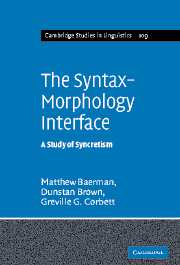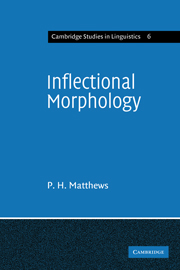The Syntax-Morphology Interface
Syncretism - where a single form serves two or more morphosyntactic functions - is a persistent problem at the syntax-morphology interface. It results from a 'mismatch' whereby the syntax of a language makes a particular distinction but the morphology does not. This pioneering book provides a full-length study of inflectional syncretism, presenting a typology of its occurrence across a wide range of languages. The implications of syncretism for the syntax-morphology interface have long been recognised: it argues either for an enriched model of feature structure (thereby preserving a direct link between function and form), or for the independence of morphological structure from syntactic structure. This book presents a compelling argument for the autonomy of morphology and the resulting analysis is illustrated in a series of formal case studies within Network Morphology. It will be welcomed by all linguists interested in the relation between words and the larger units of which they are a part.
Reviews & endorsements
'This book is a milestone in the understanding of syncretism, and will interest both specialists and non-specialists … the existing literature on syncretism is widely documented and discussed at length before the Network Morphology model is proposed, so that the theoretical inquiry matches the quality of the empirical data. Cercles
Product details
September 2005Hardback
9780521821810
304 pages
229 × 152 × 21 mm
0.62kg
2 maps 3 tables
Available
Table of Contents
- Preface
- List of abbreviations and symbols
- 1. Introduction
- 2. Characteristics of syncretism
- 3. Cross-linguistic typology of features
- 4. Formal representation
- 5. Formal framework and case studies
- 6. Conclusion
- References
- Indexes.




